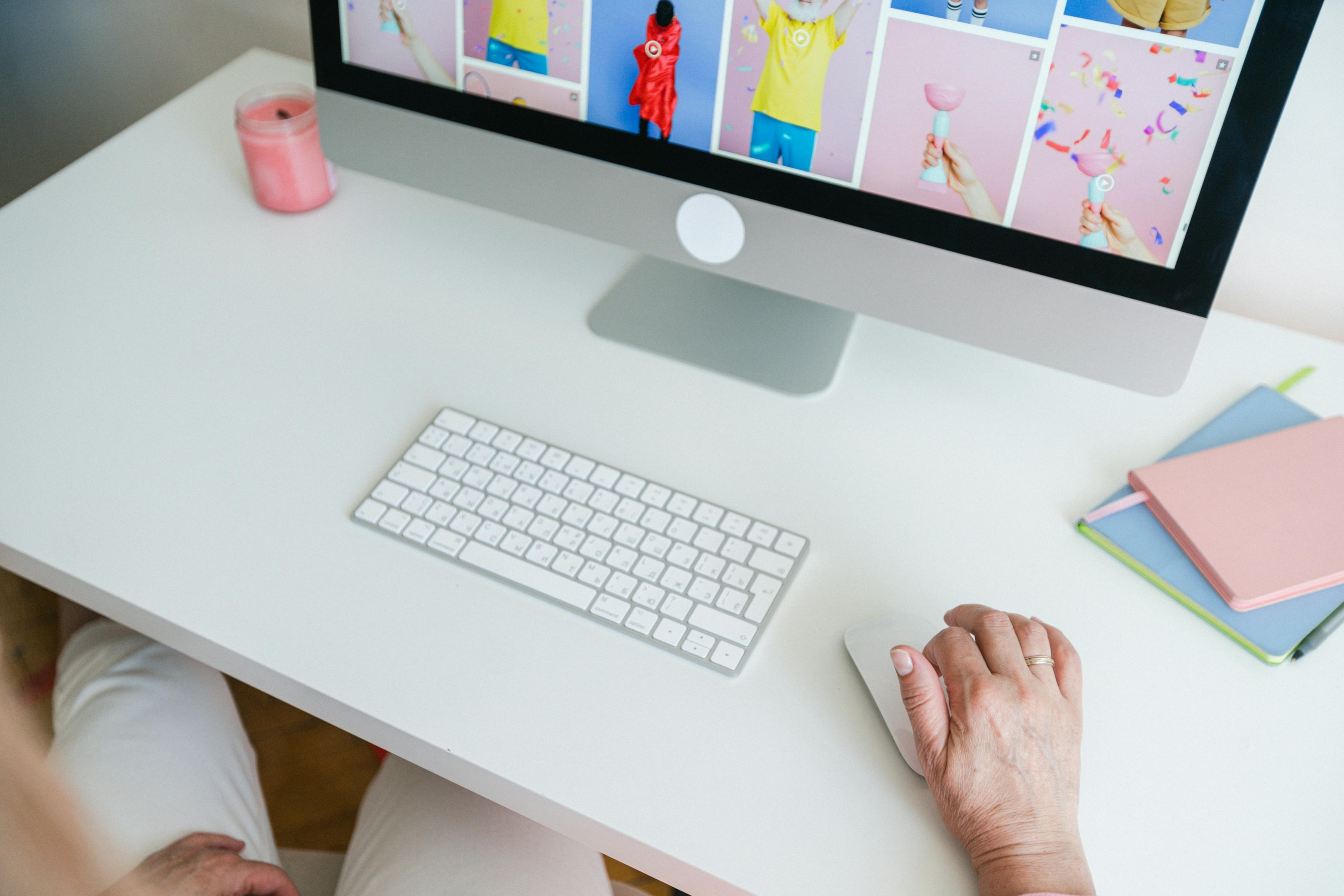If you want to revamp your productivity from top to bottom, minimalism could be a great way to approach it.
A minimalist lifestyle has been shown to help workers stay focused, improve time management, maintain their mental health, and reduce stress.
What IS Minimalism?
Minimalism is a lifestyle and design philosophy focused on reducing excess and simplifying life to emphasize what truly holds meaning to you.
Minimalism encourages intentional living, where each item or activity serves a meaningful purpose, whether in terms of functionality or joy.
“Minimalism is the intentional promotion of the things we most value and the removal of everything that distracts us from it.” – Joshua Becker
The concept of minimalism is applied in a few ways:
Lifestyle minimalism
The lifestyle of minimalism generally revolves around owning and acquiring fewer things, focusing on experiences rather than material goods, and simplifying your daily routines to reduce stress.
This might include your workload, your home, your diet, your finances, and many other aspects of your life. Most minimalists participate in lifestyle minimalism.
Minimalist design
The style of minimalism involves clean, uncluttered aesthetics with an emphasis on space, light, and essential, quality pieces of furniture and decor. Or no decor at all!
Digital minimalism
The need for digital minimalism is at an all-time high. This is the practice of limiting digital clutter, such as unused apps or excessive screen time, to focus on what’s essential.
Implementing digital minimalism can look like setting aside some time each week to clear your downloads and unwanted images, taking an inventory of the apps you use and don’t, and arranging what you keep into a folder system
It can also mean using technology less as a whole
Ready for a digital declutter?

Mental minimalism
Mental minimalism is the practice of prioritizing mental clarity by reducing overwhelming commitments, unnecessary social obligations, or distractions.
This pairs well with other types of minimalism. For example, stylistic minimalism can crossover with mental minimalism in acts like removing the labels from your bathroom products. It looks cleaner, and you’re not passively reading and taking in unnecessary information while in the shower.
And we all know shower boredom is where the good ideas happen!
Minimalism in the workplace
Here’s what we’re talking about–minimalism in the workplace. Save time and energy by simplifying the processes involved in your job. This can be implemented by a single person for their own tasks, or by an entire company to sharpen their production process.

The goal of any type of minimalism is to create more space—physically, mentally, and emotionally—for what adds value to life. Now here’s how it can increase your productivity.
How a Minimalist Life Effects Productivity
Here are the benefits minimalism can have on various productivity measures. You might discover this for yourself if you track productivity before and after implementing minimalism.
More time
With fewer things to worry about, less time shopping and deliberating purchases, and less time spent cleaning and organizing your house, you’ll find that minimalism puts a lot more time back into your paws for tasks you care more about.
What will you do with it? Maybe something productive! Or not–that’s cool, too, honestly. Hundred percent that Stardew world, why don’t ya?
More headspace
Everything we own takes up a little space in our mind. We hold memories of it, we think about where it is, where it goes, and if we should get rid of it (probably!). The fewer possessions in your life (and home), the more headspace.

More room for creativity
I don’t know if you’ve ever seen a child playing with mud or clay, but that’s all they need to create intricate worlds, stories, and disgusting-looking pancakes they make you pretend to eat.
With an overabundance of toys and gadgets, kids don’t have to stretch their imagination as much, causing it to go a bit stagnant.

Adults are the same. The difference between having distractions all day everyday and having to create entertainment and generate ideas on your own has an incredible effect on your creativity–and your happiness!
Fewer distractions
With less around, there’s less to be distracted by. Having fewer belongings can help keep you on task, maintain a clear mind, and have fewer physical barriers between you and your objectives.
Less decision fatigue
Like we said with minimalism providing more headspace–the more stuff we own, the more decisions we make throughout the day. Storing it, cleaning it, just SEEING it can be enough stress to take away your decision making power.
Fewer things to think about = less decision fatigue.
More funds
With a reduction in spending, you can have more resources to allocate toward paying for things that can simplify your life and make your job easier.
Whether that’s hiring an editor, a personal assistant, or just having your groceries delivered, spending less money on things will free up your income for energy-saving life changes.
What is Minimalism Productivity?
Minimalist productivity is the strategy of applying minimalist principles to your work style. Minimalism can lead directly to increased productivity.
Less is more.
Fewer possessions means less maintenance. Fewer commitments means more focused time. Fewer distractions leads to deeper work and gives you more time for important tasks.
Intentional choice.
By carefully selecting tasks and projects that are high-impact–perhaps through an 80/20 analysis–we can intentionally structure our work days and own life in a way that makes us most productive.
Fewer material possessions means we can be more selective about the items and activities we allow into our lives.
Simplified workspace.
A clean, organized physical environment fosters better focus and streamlined effort. This might mean decluttering your digital space, only using essential tools, and minimizing what you keep on your desk.
Key benefits of minimalism in the workplace.
- Improved Focus: Reduced distractions lead to better concentration
- Less Decision Fatigue: Fewer choices mean more mental energy for important decisions
- Enhanced Clarity: Clear space promotes clear thinking
- Better Time Management: Focus on essential tasks improves efficiency
- Reduced Stress: Less clutter and overwhelm leads to reduced anxiety
How to start working with minimalism.
Start with a sweep of your physical workspace. Remove anything that isn’t directly required for your job.
Then take a look at your digital space. Which tools are actually essential? Can you create a more logical folder and filing system?
Audit your commitments and responsibilities. Are you doing anything superfluous or unnecessary? Do you have useless meetings that could be a weekly memo instead? Prioritize your schedule for what actually makes progress toward your goals.
Create simple systems and routines. You shouldn’t be reinventing the wheel every day or every project. Create concrete plans for your regular responsibilities.
Regularly review and refine your processes and systems.

How To Use a Minimalist Lifestyle for Productivity Growth
Here’s how you might intentionally use the minimalist approach for productivity growth.
Simplify work process
First off, minimalism can be applied to your work process to streamline and simplify tasks and make objectives more achievable. What can you cut from your schedule? What can you delegate?
This might be a good time to run an 80/20 analysis and see where your efforts produce the most benefit.
Simplifying your work process can also look like task batching, time blocking, and using prioritization techniques like the 1-3-5 method.
Declutter office
Style your office in a way that is clear of clutter and distractions. Having fewer things to shift around when you’re looking for a pen, less visual mess to stress you out, and only what you need for the task at hand, will improve your focus, and thus your productivity.
Consider services
With less clutter and less money going toward stuff, you can redirect your resources to hiring out services you don’t want to perform on your own, whether for yourself or your company.
Streamline processes to get more time for deep work, planning, and growth by hiring out or delegating.
For your personal life, swapping physical goods for services is also a great way to replace/refine gift giving!
The purpose behind minimalism will be different for every person, but anyone can utilize it (or even parts of it) to increase their productivity, reduce stress, and live a more purposeful life.

How to get started with minimalism.
If you’re sold and ready to pursue some sort of minimalist lifestyle, here’s your to do list!
- Read the Beginner’s Guide To Minimalism
- Talk with your employers/employees about integrating minimalism for the whole company, if relevant
- Take full control of your life, work, flow state, and to do lists by focusing on a minimal, intentional approach to life and work